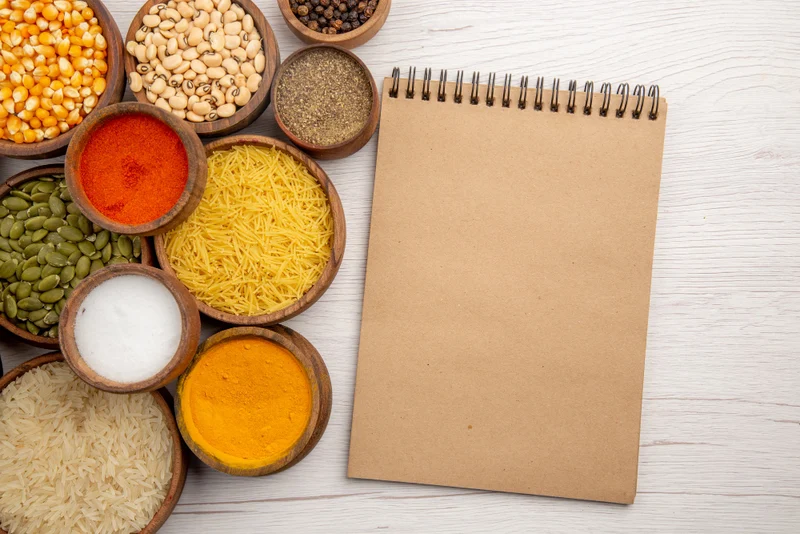Read Blog 
Hidden Sodium in Indian Foods – Why It Matters
When we think of salty foods, items like chips, pickles, and papads usually come to mind. But what if we told you that many everyday Indian dishes — the ones we consider "normal" or even "healthy" — are loaded with hidden sodium? This is especially important because excess salt (sodium) is a major factor behind rising cases of high blood pressure, heart disease, and kidney problems in India.
Let’s understand what hidden sodium is, why it is found in so many Indian foods, and how it silently affects your health.
What Is Sodium and Why Do We Need It?
Sodium is a mineral that our body needs in small amounts. It helps in:
-
Controlling blood pressure
-
Balancing fluids in the body
-
Supporting muscle and nerve function
But the key word here is “small” amounts.
According to the World Health Organization (WHO), an adult should not consume more than 2,000 mg of sodium per day — roughly one teaspoon of salt. However, studies show that Indians are consuming twice that amount, and often without realizing it.
What Is Hidden Sodium?
Hidden sodium refers to the salt content in foods that don’t taste salty or where you don’t expect salt. This includes:
-
Ready-made spice blends
-
Pickles and chutneys
-
Snacks like bhujia, samosas, or farsan
-
Bakery items like bread, biscuits, and cakes
-
Canned or preserved foods
-
Processed or packaged items like instant noodles or ready-to-eat meals
You might not sprinkle extra salt on these foods, but they already contain high levels of sodium.
Common Indian Foods High in Hidden Sodium
Here are some everyday foods that may surprise you with their sodium levels:
1. Pickles and Papads
Almost every Indian household has pickles and papads. A single spoon of pickle or a piece of papad can have 200-300 mg of sodium. We eat them as sides, but they add up quickly in your daily intake.
2. Spice Mixes and Masalas
Store-bought masalas like garam masala, chaat masala, and pav bhaji masala often contain added salt to enhance flavor. Every spoon you add means more sodium, even if you don’t add salt separately.
3. Instant and Packaged Foods
Instant noodles, soups, and snacks like sev, murukku, or mixture are loaded with salt to preserve them and enhance taste. Even a small packet can exceed 1,000 mg sodium!
4. Street Food
Street foods like chaat, vada pav, samosa, and pakoras are often seasoned heavily with salty masalas, chutneys, and sauces.
5. Restaurant & Takeaway Food
Curries, biryanis, dals, and even roti or naan from restaurants contain more salt than home-cooked food. Chefs add salt multiple times – during marination, cooking, and seasoning.
How Hidden Sodium Affects Your Health
1. High Blood Pressure
Sodium pulls water into the bloodstream, increasing blood volume. This raises your blood pressure, putting strain on the heart.
2. Heart Disease & Stroke
Over time, high blood pressure damages arteries, leading to heart attacks and strokes — two of the biggest killers in India.
3. Kidney Damage
Excess sodium makes kidneys work harder, and over time, they may fail to remove toxins efficiently.
4. Water Retention and Bloating
High sodium causes your body to hold on to extra water, making you feel puffy and bloated.
5. Increased Risk of Osteoporosis
Too much salt can cause the body to lose calcium, leading to weak bones over time.
Why Is This a Bigger Issue in India?
-
Cultural habits: We love flavor, and salt enhances taste. From spicy pickles to tangy chaat, salt is everywhere in Indian cuisine.
-
Lack of awareness: Many people don’t know that even “non-salty” foods like biscuits or bread have sodium.
-
No clear labeling: Many Indian packaged foods don’t clearly mention sodium levels.
-
Rising packaged food consumption: Urban lifestyles mean more reliance on processed foods.
How to Reduce Hidden Sodium in Your Diet
You don’t need to give up your favorite Indian foods — just make smarter choices:
Read Labels
Look for “low sodium” or “no added salt” options in packaged foods. Check the nutrition panel for sodium content.
Cook at Home
Cooking at home gives you full control over how much salt you use. Avoid adding salt to rice or chapati dough.
Limit Pickles, Papads & Chutneys
Enjoy these in moderation — they are sodium bombs. Use smaller portions or make low-salt versions at home.
Cut Back on Packaged Snacks
Instead of salted namkeen, go for roasted chana, fresh fruits, or homemade snacks.
Use Herbs & Spices
Flavor your food with herbs like coriander, mint, curry leaves, or spices like cumin, turmeric, ginger, garlic, and mustard. They add taste without the salt.
Avoid Extra Table Salt
Don’t sprinkle salt on salads, curd, or fruits. Train your taste buds to enjoy food with less salt.
Hydrate Well
Drink enough water daily — it helps flush out excess sodium from the body.
A Word for Those With Health Issues
If you have high blood pressure, kidney issues, or are at risk of heart disease, you need to be even more careful. Talk to your doctor or a dietitian about a low-sodium diet plan suitable for your lifestyle.
Conclusion: Don’t Let Sodium Stay Hidden
Sodium is essential in small amounts, but hidden sodium in Indian foods is putting your health at risk — quietly, every day. The problem is not just about adding less salt; it's about knowing where the salt is hiding.
Start small — read food labels, choose fresh over processed, and use herbs to flavor your meals. With a little awareness and effort, you can take control of your salt intake and protect your long-term health.
Take the first step towards a healthier heart and body by learning more about hidden sodium in Indian foods – why it matters.










